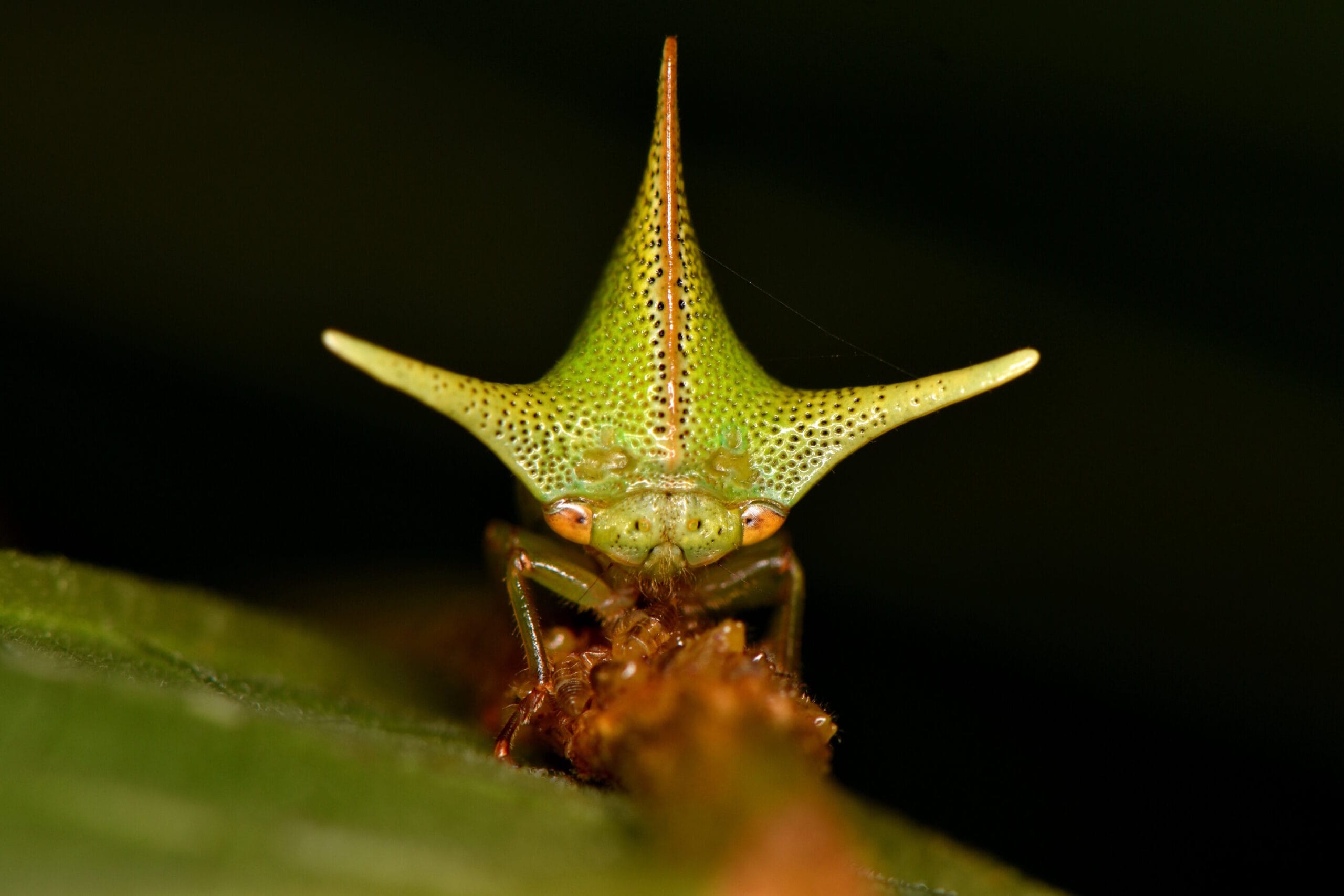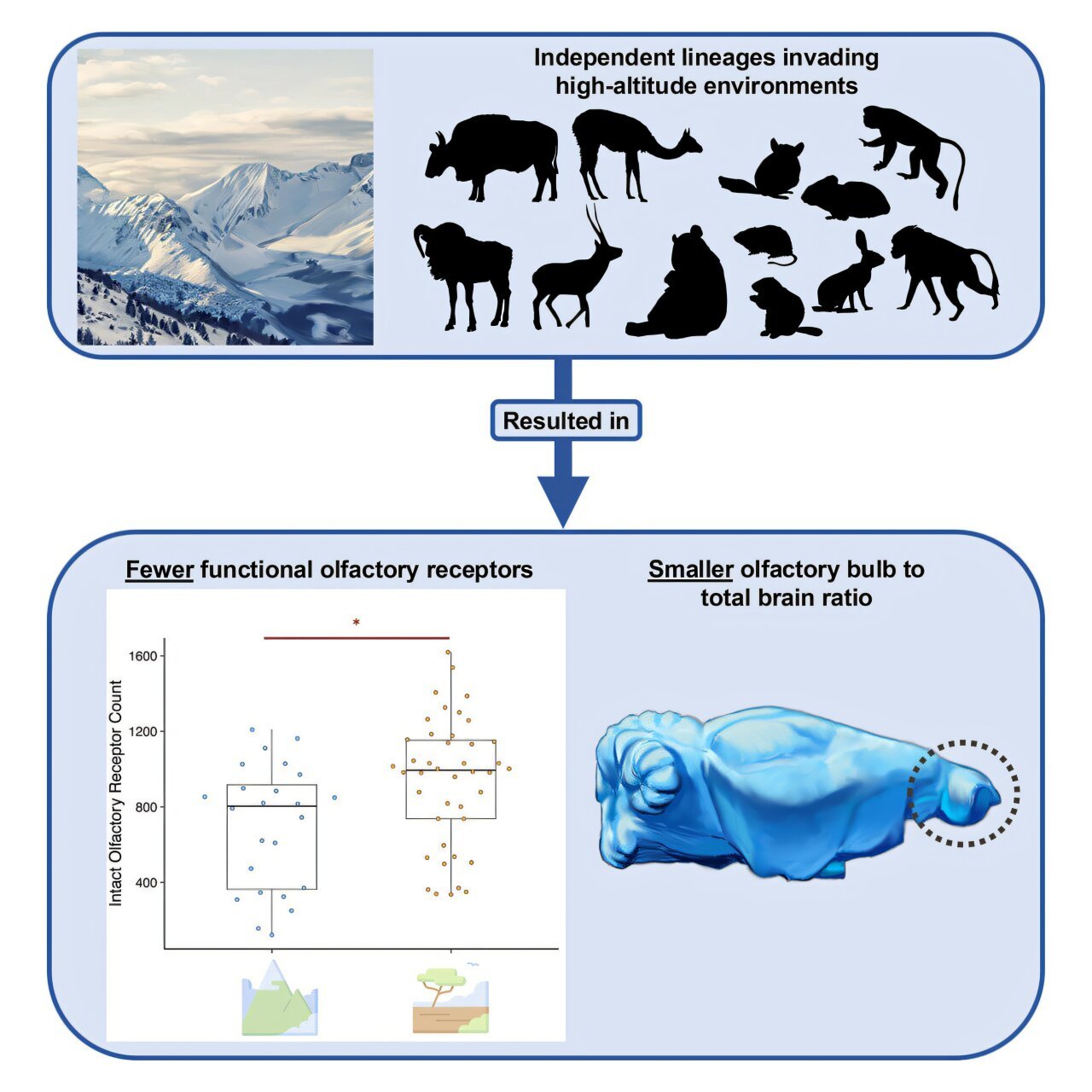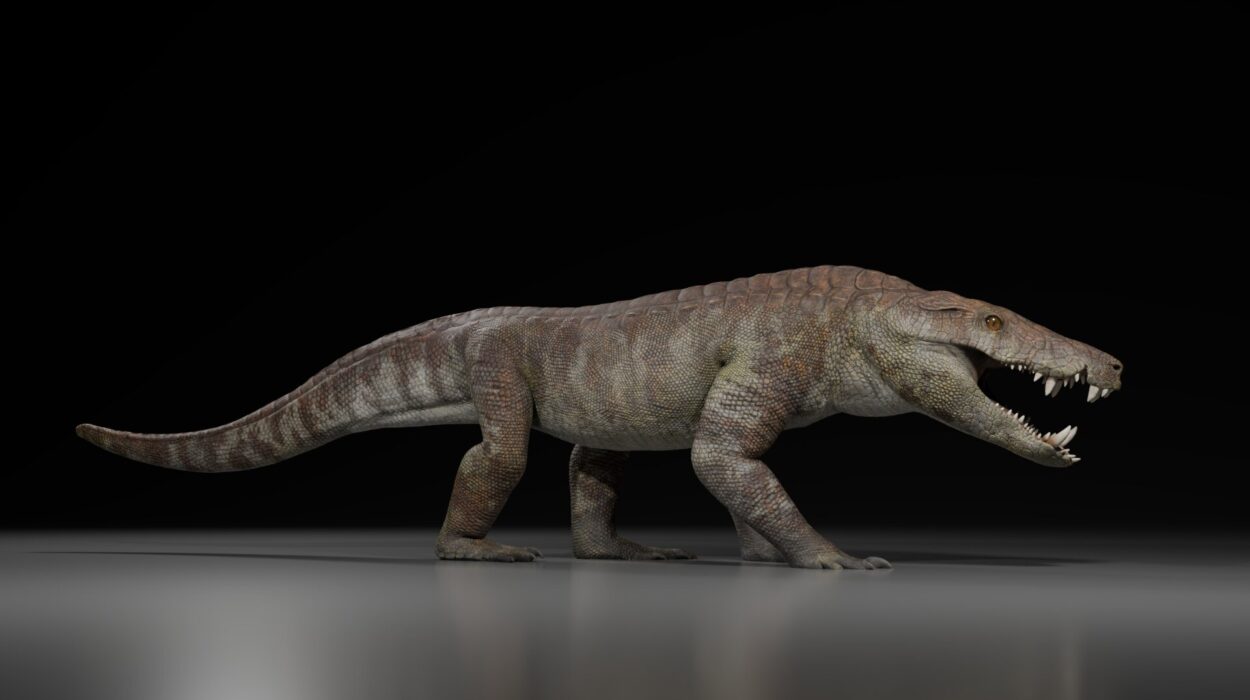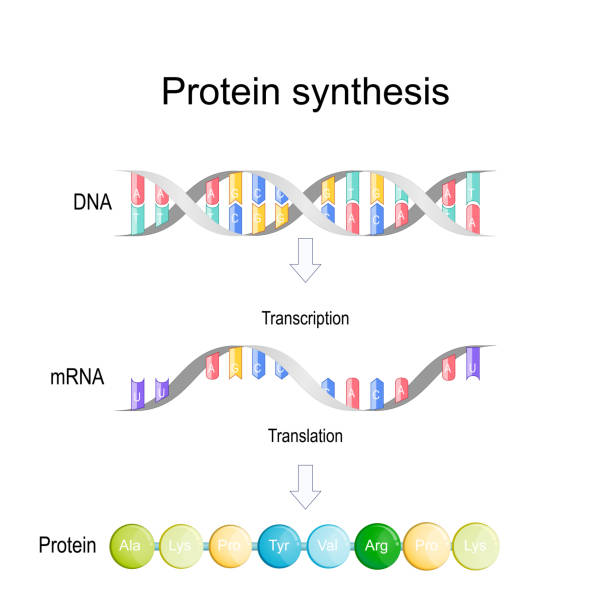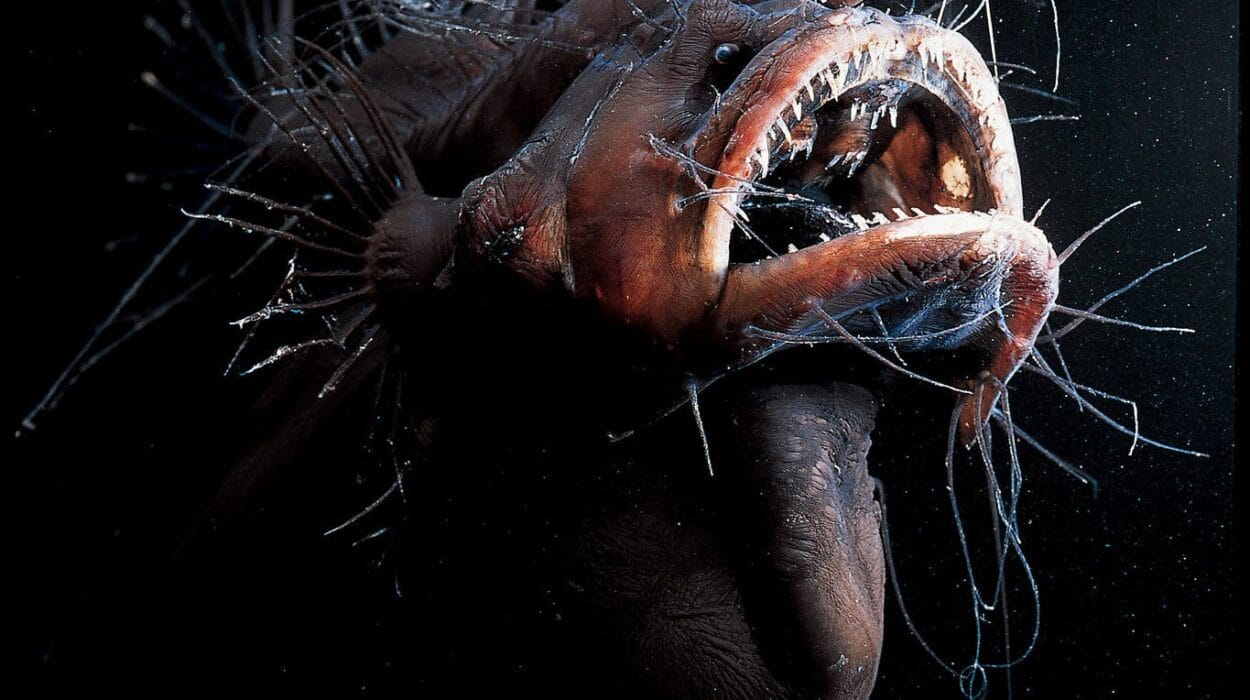Could the strange and wonderful body shapes of treehopper insects—creatures that look more like alien sculptures than Earthly life—be explained not by camouflage, mimicry, or defense, but by their ability to sense static electricity?
That’s the bold and fascinating new hypothesis explored in a study recently published in the Proceedings of the National Academy of Sciences. Led by Dr. Sam England, who completed his Ph.D. at the University of Bristol in 2023, and Professor Daniel Robert, a world expert in bionanoscience, the research suggests that the extraordinary forms of treehoppers may be shaped not just by visual predators, but by the invisible electric forces that surround them.
The Weird World of Treehoppers
Treehoppers are among the most visually striking insects on Earth. With over 3,000 known species scattered across the globe, they wear what look like miniature helmets, horns, thorns, tridents, balls, and sometimes entire faux antlers on their backs. These outgrowths, part of their “pronotum” (an extended section of the thorax), have puzzled scientists for decades.
Some treehoppers resemble thorns to hide from predators. Others mimic ants or wasps. A few even sport symmetrical shapes that look more like tiny bits of modern sculpture than survival tools. While certain body shapes can be explained by mimicry or camouflage, those explanations only work on a species-by-species basis. They fall short of explaining the entire family’s near-universal devotion to bizarre and elaborate forms.
That’s where static electricity—and a groundbreaking insight from Dr. England and Professor Robert—comes in.
A Hidden Sense in a Charged World
In recent years, scientists have discovered that several insects, including bumblebees and caterpillars, can detect static electricity. This might sound trivial, but it’s not: insects live in a world filled with electrical signals. Flowers emit faint charges. Flying insects carry electrical charges that change as they move through the air. And predators—especially those with wings—often build up high static charges through friction as they fly.
Dr. England and his team wondered: could treehoppers, with their eccentric forms, also be tapping into this invisible force to detect danger before it strikes?
To test the idea, they turned to one of the treehopper’s natural enemies—predatory wasps.
Wasps and Warning Fields
The researchers found that predatory wasps carry significant electrostatic charges, and that these charges differ from those of “friendly” insects, such as the stingless bees that sometimes protect treehoppers in exchange for honeydew (a sugary substance treehoppers excrete). More importantly, when exposed to an artificial electric field, treehoppers reacted defensively—retreating or moving away from the source, suggesting that they are capable of detecting such fields.
But how do their strange shapes come into play?
Using computer models and simulations, the researchers showed that the elaborate body forms of treehoppers amplify the surrounding electric field, increasing the intensity of the charge detected across their body. In essence, their unusual structures act like antennae or lightning rods—sensitive extensions that make them better at detecting electrical changes in the air.
This discovery opens up a new and electrifying perspective: perhaps treehopper shapes aren’t just about being seen (or not seen), but about sensing the unseen.
Friend or Foe? Treehoppers May Know Electrically
One of the most intriguing aspects of the study is the suggestion that treehoppers can distinguish between friend and foe using static electricity. The team found that predatory wasps and friendly stingless bees carry different types of electric charges—not just in strength, but in polarity (positive vs. negative). That’s a potential evolutionary jackpot: if treehoppers can “read” these electrical cues, they may not need to see the approaching insect or smell it—they could feel its electric fingerprint.
This could explain why treehoppers have evolved such sensitive and bizarre shapes. If their forms make them better at detecting tiny, fleeting differences in electric charge, they may be better equipped to respond—retreating from predators or tolerating allies.
It’s a tantalizing idea that flips the evolutionary narrative. Rather than evolving to hide from predators, treehoppers might have evolved to feel them coming first.
A New Frontier: Evolution Driven by Electricity?
The implications of this study are far-reaching. If static electricity plays a role in shaping treehopper morphology, could it also drive the evolution of other strangely shaped creatures? What about the spiny legs of spiders, the bristled antennae of certain beetles, or even the bizarre forms of some plants?
“We think our study provides a really exciting launch pad for investigating static electricity as a driver of organismal morphology more generally,” said Dr. England. “There’s plenty of other insects, spiders, and other animals and plants that also have really extreme shapes, which in many cases are currently without explanation.”
The team emphasizes that while their data provide compelling support for the role of electrostatic detection in treehoppers, the study is just the beginning. They cannot yet prove that electricity alone has driven treehopper evolution. But they have built a strong case that it plays a key role.
The next step? Testing how different treehopper shapes respond to varying electric environments—such as forests filled with different predator types or weather conditions that affect electrostatic charge.
“If we can link treehopper shapes to certain aspects of their electrical ecology,” England added, “like specific predators which approach from certain angles with particular static charges, this would really begin to strongly support our ideas around static electricity as an evolutionary driver.”
Seeing the Invisible World Around Us
Science is filled with moments when something ordinary becomes extraordinary through a new lens. For centuries, people have looked at treehoppers and wondered what evolutionary trick gave them their peculiar armor. Perhaps the real answer was invisible all along—a force that surrounds us, affects us, and that only now we’re beginning to understand.
The idea that electricity—not just vision or smell—could be a dominant force in shaping life’s forms is thrilling. It invites us to reimagine how we think about evolution, adaptation, and the senses that animals rely on.
More than that, it reminds us of something humbling and beautiful: that life is constantly adapting not just to the visible and the loud, but to the silent, the subtle, the unseen. And sometimes, it takes a strange little insect with a trident on its back to show us the shocking truth.
More information: Sam J. England et al, Electroreception in treehoppers: How extreme morphologies can increase electrical sensitivity, Proceedings of the National Academy of Sciences (2025). DOI: 10.1073/pnas.2505253122
